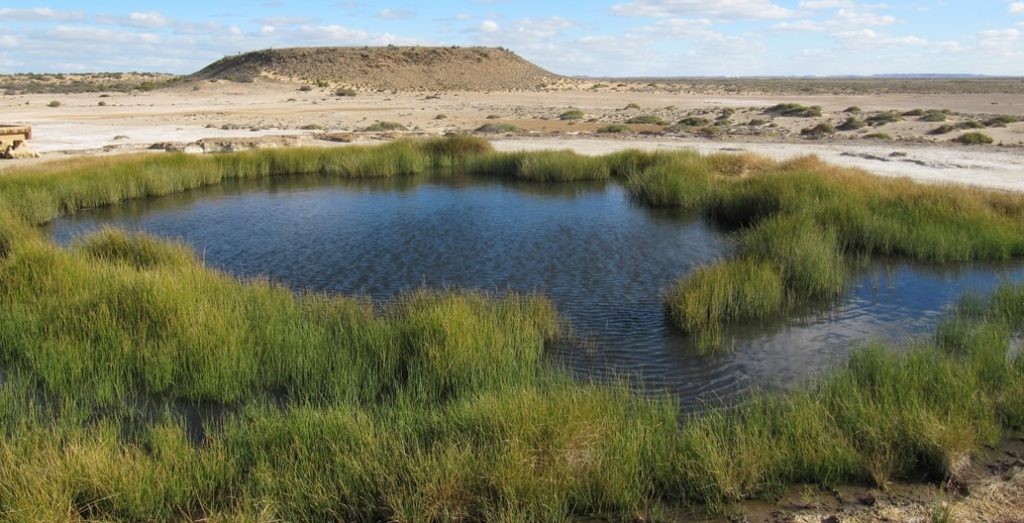Climate change poses both direct and indirect threats to the socio-economic, institutional and environmental systems of the world’s Indigenous populations. Australia is no exception. Yet through the formation of political alliances and establishment of on-country initiatives Indigenous Australians have been leading the way in the development of climate adaptation responses.
 |
| Under threat from climate change, the Bubbler is a natural spring and important cultural site for the Arabana people of the Kathi Thanda region. |
Firstly, there are a range of climate issues that confront Indigenous people today. Of high priority is not just the biophysical impact on plants and animals, but how these impacts in turn will affect traditional sites, knowledge and culture. For example, sea level rise and associated flooding is having a big impact in the Torres Strait while the Arabana people of the Kathi Thanda-Lake Eyre have special sites, in particular one men’s site, which is threatened by erosion from more intense flooding. Rainforest-based peoples in North Queensland are seeing first hand how more intense cyclones are impacting fishing and other significant sites.
Read the Foreground story by Melissa Nursey-Bray - “Not passive victims: Indigenous Australians respond to climate change.”

No comments:
Post a Comment